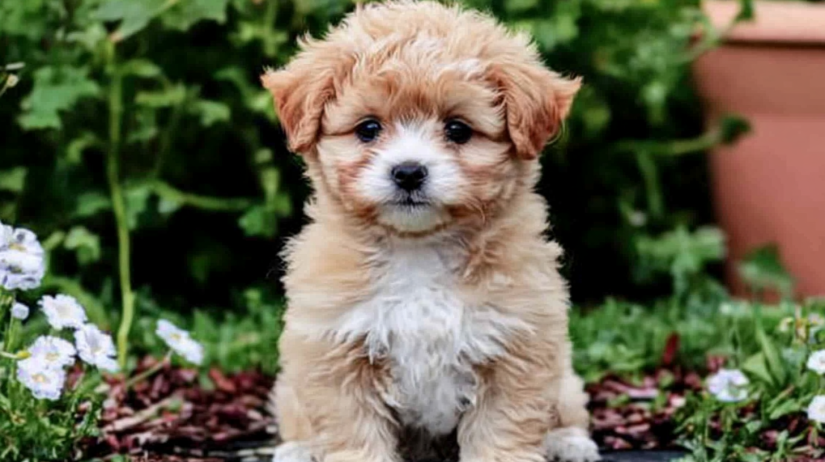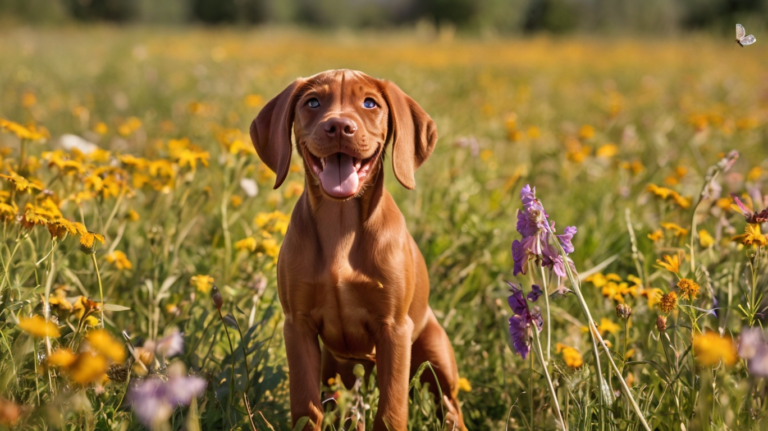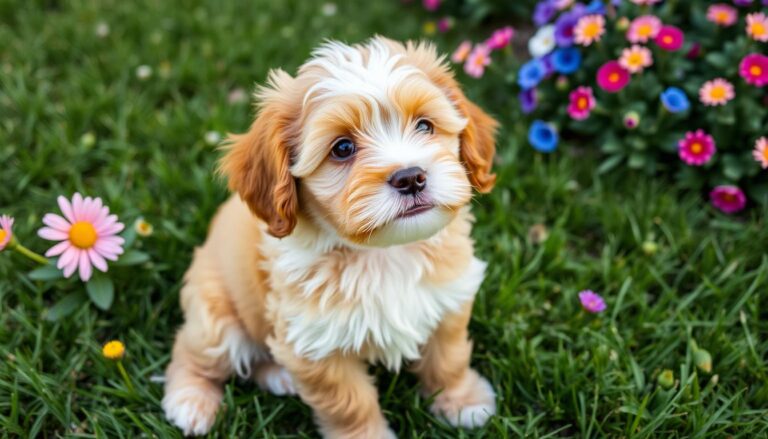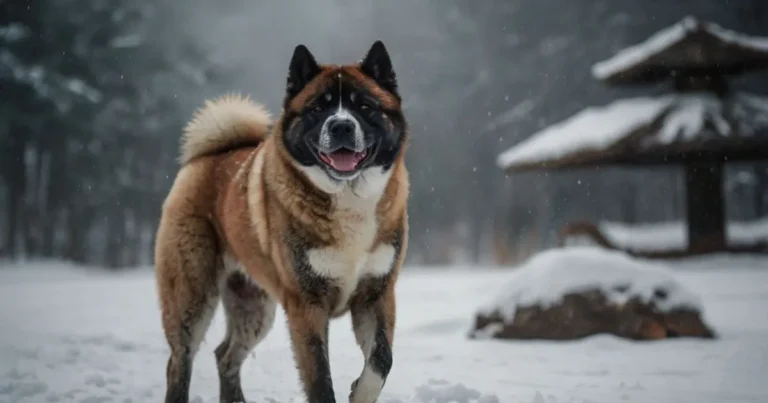Pomapoo Puppies: 7 Wonderful & Inspiring Secrets
Introduction
Picture a fluffy little furball prancing excitedly toward you, tail wagging a mile a minute, tiny paws tapping on the floor as if they’re dancing with delight. That mental image sums up what it’s like to greet pomapoo puppies at the end of a long day. These small hybrids often wear expressions that seem perpetually curious and ready for fun, blending the best qualities of both the Pomeranian and the Poodle.
Whether you’ve stumbled upon photos of pomapoo puppies sporting tufts of curly hair or you’ve heard stories of their unwavering devotion, this guide will provide all the insights you need to decide if they’re the perfect addition to your household. Along the way, we’ll dive into their breed origins, temperament, grooming needs, potential health issues, and more. Let’s embark on this journey together to explore everything that makes pomapoo puppies so uniquely lovable—and help you determine if they’re a fit for your lifestyle.
A Brief Look at the Pomapoo’s Background
Pomeranian Roots
The Pomeranian hails from the historical Pomerania region in northern Europe, evolving from larger spitz-type sled dogs into the toy-sized fluff we know today. pomapoo puppies often inherit the Pomeranian’s bold confidence, bright expressions, and plush double coat. Pomeranians are also known for their watchful, sometimes vocal nature, attributes that might be reflected in a Pomapoo’s tendency to bark at unfamiliar noises or new guests.

Poodle Heritage
On the other side, the Poodle—whether Toy or Miniature—brings a legacy of keen intelligence, trainability, and a famously low-shedding coat. pomapoo puppies commonly receive the Poodle’s curly or wavy hair texture, plus a penchant for quick learning and affectionate, people-oriented behavior. The Poodle’s background as a water retriever and performer in circuses also underscores their athletic potential, even if they’re small in stature.
The Emergence of Pomapoo Puppies
Designer hybrids like pomapoo puppies gained popularity over recent decades, partly due to a desire for lower-shedding coats and the appeal of combining two endearing breeds. Although not recognized as a purebred by major kennel clubs, pomapoo puppies have carved out a niche among dog lovers seeking small, sociable, and adaptable companions. Each puppy can vary in appearance and temperament depending on which genes from each parent dominate, but many Pomapoo owners appreciate this unpredictability as part of the breed’s charm.
Physical Characteristics
Size and Weight
When fully grown, pomapoo puppies typically weigh anywhere from 5 to 15 pounds, standing roughly 8 to 12 inches tall at the shoulder. Their petite build makes them suitable for apartments or smaller homes, though they still need daily exercise and mental stimulation to stay fit and happy.
Coat Types
One of the biggest draws of pomapoo puppies is their fluffy, eye-catching coat. Because they’re half Poodle, many Pomapoos have coats that shed less than a purebred Pomeranian. Yet, texture and density can fluctuate:
- Curly or Wavy: Inheriting more from the Poodle lineage, featuring tight curls or a loose wave.
- Straight/Fluffy: More reminiscent of the Pomeranian’s plush double coat, though often slightly less dense.
Colors also range widely, from black, white, cream, and brown to apricot, red, sable, or even parti-color combinations. Consistent grooming is essential to maintain coat health and reduce matting.
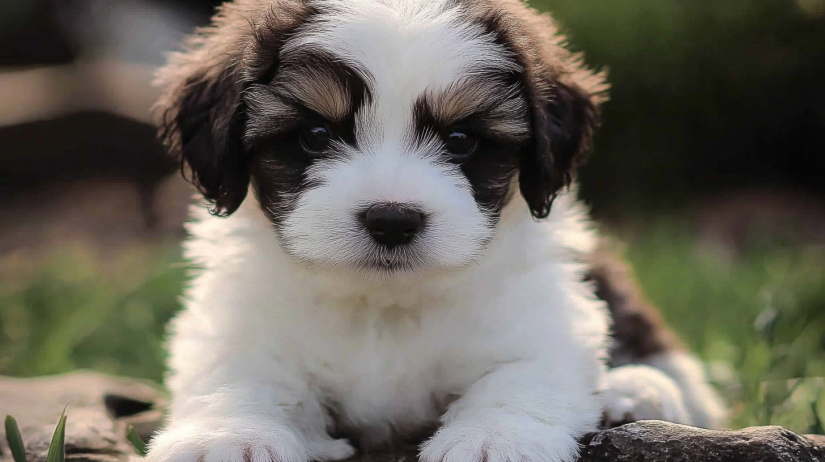
Facial Features
pomapoo puppies can boast either a fox-like muzzle (similar to the Pomeranian) or a shorter snout leaning toward the Poodle. Their eyes are typically round and expressive, and their ears might stand upright, fold over, or flop, depending on which parent’s genes dominate. Overall, expect a sweet, alert expression that radiates curiosity.
Table: Growth Timeline (Approximate)
| Age | Weight Range | Milestones |
|---|---|---|
| 8–10 Weeks | 1–3 lbs | Transition to new home, early bonding, basic crate intro |
| 3–4 Months | 3–5 lbs | Rapid growth, teething, short play sessions |
| 5–6 Months | 4–8 lbs | Puppy “teen” stage, refining potty training |
| 7–9 Months | 6–10 lbs | Gains agility, more advanced obedience is possible |
| 1 Year+ | 5–15 lbs (adult) | Reaches adult size, coat texture may evolve, final maturity |
Personality and Temperament
High Intelligence, High Spirit
pomapoo puppies often inherit quick wits from the Poodle side, enabling them to learn commands and tricks with relative ease. This intelligence can be both a blessing—facilitating training—and a challenge if they become bored or cunning about stealing food from counters. Pair that brainpower with the Pomeranian’s zest for life, and you have a spirited pet that thrives on interactive play and mental puzzles.
Affectionate and Social
If you enjoy cuddling on the couch with a tiny ball of fluff, pomapoo puppies can deliver that snug factor. They tend to form close bonds with their human families, craving attention and eager to be involved in daily activities. Early socialization ensures they remain welcoming toward visitors, children, and other pets, although some Pomapoos might cling strongly to one favorite person in the household.
Potential for Vocalization
Pomeranians are known for being vocal watchdogs, and some pomapoo puppies might inherit this trait. While barking can serve as an alert when strangers approach, it can become excessive if not managed. Early training and consistent rules about when barking is appropriate help maintain peace with neighbors and reduce undue noise.
Great for Novice Owners (with Commitment)
Because they’re so eager to please and not overly large or intimidating, pomapoo puppies are often considered a solid choice for first-time dog owners. However, that doesn’t mean they require less dedication. They still need daily walks, mental stimulation, routine grooming, and social interaction to stay happy and well-adjusted.
Bringing a Pomapoo Puppy Home
Choosing a Reputable Source
As with any designer dog, finding pomapoo puppies from ethical breeding practices is crucial. Look for:
- Health Testing: The breeder should screen parent dogs for common conditions like patellar luxation, hip or elbow dysplasia, and eye problems.
- Clean, Positive Environment: A well-maintained space with ample social interaction for puppies.
- Willingness to Answer Questions: A reputable breeder is transparent about lineage, health, and temperament.
Alternatively, some pomapoo puppies might be available for adoption through rescue organizations, especially those specializing in small or designer breeds.
Preparing Your Home
Before your pomapoo puppy arrives, stock up on essentials:
- Quality Puppy Food: Choose a small-breed formula to suit their faster metabolism.
- Food and Water Bowls: Stainless steel or ceramic bowls are easy to clean and safe.
- Chew Toys: Teething puppies need safe outlets—rubber chew toys, soft plushies, or rope toys.
- Crate or Playpen: For house training and a secure place to rest.
- Puppy Pads (Optional): Some owners start with pads, transitioning to outdoor potty breaks.
First Days
Your new pomapoo puppy may feel anxious or overwhelmed initially, so approach those first days patiently:
- Set a Routine: Feed and walk at consistent times to provide structure.
- Short Interactions: Let them explore a small area before gradually introducing new rooms.
- Positive Associations: Offer treats and praise for calm or desired behavior, reinforcing that this new environment is safe.
Daily Care and Maintenance
Nutrition and Feeding
Because of their size, pomapoo puppies benefit from multiple small meals a day—usually three daily feedings until about six months old, then two thereafter. Overfeeding is easy with small dogs, so measure portions and watch for signs of excessive weight gain, such as decreased energy or difficulty breathing.
Exercise Requirements
Despite their tiny stature, pomapoo puppies still need daily activity:
- Two Short Walks: Aim for 10–15 minutes each, adjusting for your puppy’s energy.
- Indoor Play: Engage them in fetch, tug-of-war, or puzzle toys to mentally stimulate them.
- Avoid Overexertion: Their small legs and sometimes delicate bone structure mean you should keep high-impact activities brief and gentle.
Grooming Essentials
- Brushing: Depending on coat type, brushing 2–4 times per week can prevent mats.
- Bathing: Every 4–6 weeks or as needed, with a mild dog shampoo.
- Nail Trims: Overgrown nails can cause discomfort, so trim every 3–4 weeks or whenever you hear clicking on floors.
- Ear Checks: Use a vet-approved solution to clean the outer ears if there’s wax buildup.
Training Focus
pomapoo puppies respond well to consistent, reward-based training:
- Positive Reinforcement: Use small treats, verbal praise, or favorite toys as rewards.
- Short Sessions: Their attention spans might be limited, so 5–10 minute training bursts several times a day are more effective than one prolonged session.
- Early Socialization: Introduce them to a variety of sounds, people, and mild challenges. Puppy classes can help expand their comfort zone.
Potential Health Concerns
Crossbreeds don’t guarantee immunity from hereditary conditions. pomapoo puppies may inherit issues from either the Pomeranian or Poodle side:
- Patellar Luxation: A frequent knee problem found in smaller breeds.
- Dental Issues: Crowded teeth can lead to tartar build-up and gum disease.
- Hypoglycemia: In rare cases, tiny pups might struggle with low blood sugar if meals are inconsistent.
- Eye Conditions: Regular checkups help catch early signs of cataracts or progressive retinal atrophy (PRA).
Stay up-to-date with vaccinations, heartworm prevention, and annual (or biannual) vet exams to detect any emerging health concerns early on.
Environment and Lifestyle
Apartment vs. Larger Home
pomapoo puppies adapt well to smaller living spaces, as they typically only need moderate exercise. Even so, they do appreciate a secure yard or a local park for occasional sniffing expeditions. Always supervise them outside—due to their size, they’re more vulnerable to predators or escaping through small gaps in fences.
Ideal Family Setup
Children can enjoy romping with pomapoo puppies, though careful supervision is recommended to ensure gentle handling. Because these pups are small, rough play from enthusiastic young kids can inadvertently cause injury. With the right instruction on dog manners, kids and Pomapoos often form unbreakable bonds.
Interaction with Other Pets
When socialized early, many pomapoo puppies befriend resident cats or dogs. However, some might demonstrate territorial instincts if they feel overshadowed. Introducing them on neutral ground and reinforcing calm behavior with treats fosters a friendlier environment. Keep initial meetings short and positive.
Heat and Cold Sensitivity
Due to their smaller bodies and occasional single-layered coats (in the more Poodle-like individuals), pomapoo puppies may be extra sensitive to temperature extremes:
- Heat: Watch for signs of overheating like excessive panting or drooling. Provide plenty of water and shade.
- Cold: In cooler climates, they might need a sweater or limited outdoor time to prevent shivering or discomfort.
Real-Life Examples: Pomapoo Success Stories
Case Study 1: Bella the Therapy Star
Bella was a shy pomapoo puppy initially reluctant around strangers. With careful socialization—puppy classes, short meet-and-greets with neighbors—she developed confidence and blossomed into an outgoing companion. Encouraged by her gentle demeanor, Bella’s owner enrolled her in therapy dog training. Today, Bella visits a local nursing home weekly, providing comfort to seniors who adore her soft coat and sweet face.
Case Study 2: Rocky’s Agility Adventures
Rocky, an energetic pomapoo puppy from a more Poodle-influenced line, displayed an unusual drive for physical challenges. His owner introduced him to beginner’s agility courses at 6 months old. Despite his petite size, Rocky astounded trainers with his quick leaps over small hurdles and zippy runs through tunnels. He found a fantastic outlet for his curiosity and energy, eventually competing in local agility trials and charming onlookers with his fearless spirit.
FAQs
Are pomapoos considered tiny dogs?
Absolutely, most pomapoo puppies remain under 15 pounds at full maturity. Their compact build suits snug living conditions. They retain a small, cuddly form even as adults.
What’s the ideal daily exercise for pomapoo puppies?
They do well with 20–30 minutes of mild activity each day. pomapoo puppies enjoy short strolls or interactive games. Avoid strenuous workouts, as their tiny frames can’t handle excessive strain.
Do pomapoos blend in nicely with families that have children?
Generally, they do, especially if socialized young. pomapoo puppies can form strong bonds with little ones. Make sure children learn how to handle them gently to avoid accidental harm.
Are apartments suitable for pomapoos?
Yes, their small stature and lower exercise demands fit apartment life. pomapoo puppies appreciate quick daily walks or playtime. Regular bathroom routines keep them comfortable and your home clean.
Are pomapoos prone to constant barking?
Some may bark at new sounds or sights. Properly raised pomapoo puppies learn boundaries with consistent guidance. Teaching them to settle ensures they won’t bark excessively.
What’s the ideal grooming routine for pomapoos?
Frequent brushing—at least a few times per week—is key. pomapoo puppies might need periodic baths and hair trims. Keeping ears and nails tidy keeps them comfortable and reduces health risks.
Conclusion
Combining the fearless poise of a Pomeranian with the Poodle’s intelligence and gentle nature, pomapoo puppies offer a captivating blend of playfulness, affection, and adaptability. Their compact size, wide range of coat colors, and moderate exercise needs make them appealing to city dwellers and suburban families alike. Yet, they still require consistent attention, socialization, and mental engagement to channel their lively curiosity positively. If you’re prepared to invest time in grooming, training, and forming a tight bond, pomapoo puppies can reward you with years of tail-wagging devotion. Ready to share your experiences or ask a question about pomapoo puppies? Drop a comment below, and let’s build a community of Pomapoo fans excited to learn from one another!
For additional information on responsible dog ownership, adoption resources, and general pet-welfare guidelines, visit the ASPCA (American Society for the Prevention of Cruelty to Animals). This respected organization provides a wealth of information on caring for animals, ensuring your pomapoo puppies receive all the support they deserve.

